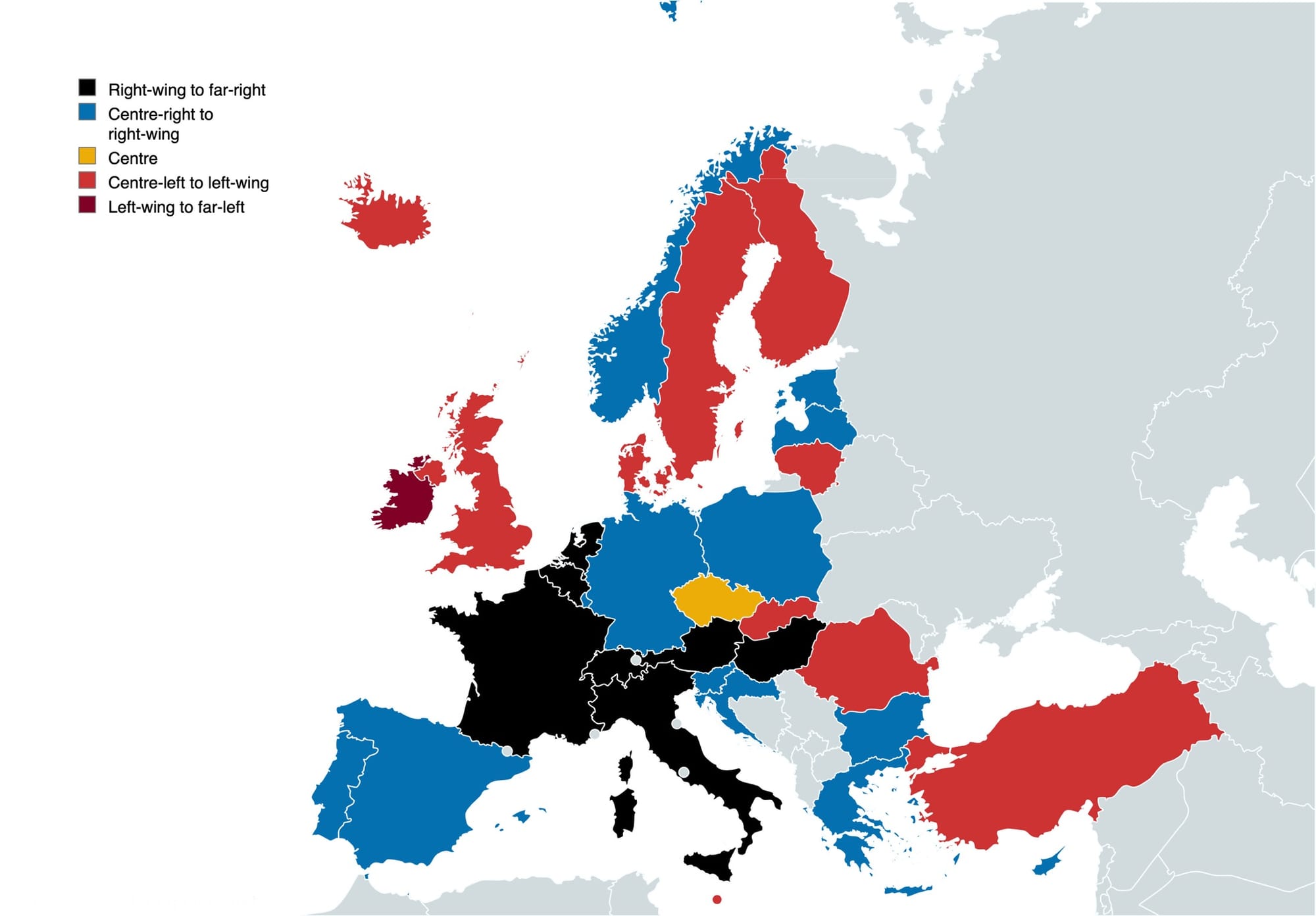Numbers Don't Lie: Europe Unsure Ahead of EU-Election

The dynamic world stage is awakening new challenges for the European continent. A rising Asia and Africa increase global competition and put more pressure on the continent's education and by extension high-skilled labour that can contribute to innovation. New migration and climate pacts hope to help unify the group by working together and lessening the burden of going it alone. The largest bloc in the European Parliament, the European People's Party (EPP) with figures such as Ursula von der Leyen, working with the Socialists & Democrats (S&D) alongside the Renew Europe party (RE) are attempting to solve these questions. However, many Europeans seem unsure; the rise of the European Conservatives and Reformists (ECR) and Identity and Democracy (ID) suggest that many question the need for the EU in its current form. This election is playing out in some of the most turbulent times for the European Union, in recent history, the different forces pulling in polar opposite directions; the ongoing war in Ukraine, energy and food security alongside immigration and climate change are factors at play and explain why this EP-election is vital. The coming 5 years in Brussels will determine the project's decisions and whether the group will even stick together as a whole.
That is why this month's edition of Numbers Don't Lie is unique; as the last compilation of data from around Europe before the election it can garner a helpful insight into the current political state of the continent. And by extension what the result may be. As a benchmark the map below showcases the largest political party in each country's domestic politics, this map in particular reflects the result 1 year ago (to compare with current figures. Ideologies are classified through EU party affiliation or what the consensus agrees upon.

The rise of the far-right in France, and BBB in the Netherlands, stand out. Moreover, the Portuguese Socialist Party was replaced by the centre-right AD coalition. Otherwise, bastions of liberalism remained, in Slovenia and Estonia, though the fall of nations such as France and the Netherlands remained prevalent. Erdogan's AKP (Turkey) and Orban's Fidesz (Hungry) alongside PiS (Poland) and ÖVP (Austria) continued to dominate their domestic politics. Places such as Germany, Norway, and the Czech Republic were discontent with their governments, hence the popularity of the opposition parties. However, other countries such as Croatia, Finland, and Greece with popular incumbent governments enjoyed stronger support, though the Finish ruling Coalition Party held a less comfortable lead over the opposition Social Democrats. In simple terms, Europe was changing in places like France, the Netherlands, and Portugal whilst the Croatian HDZ continued being popular alongside New Democracy in Greece and AKP in Turkey. In total, there are 11 blue nations, 9 red, 8 black, 3 yellow, and 1 dark red.
Lastly, the vastly different opinions across the continent from Sweden to Cyprus and more reflected a deeply divided state, the compromises during the Swedish presidency showcased the willingness for compromise, even across ideological lines. The map below showcases the same information as the one above, however, with last month's polling.

Last month the center-left to left-wing made strides, and both Portugal and Finland changed in the left's favour. Meaning that the categorization centre-left to left-wing re-secured its place as the 2nd largest category in Europe. Last month the right-wing to far-right experienced no change. On the other hand, both nations that defected came from the centre-right to right-wing, bitting into the substantial lead, nation-wise, that the category held. 12 (+1) blue, 10 (+1) red, 8 (-) black, 1 (-2) yellow and 1 dark red (-). Beneath is the same information as below, however, with the most recent polling:

Since last month 2 things have happened; Portugal has returned to the centre-right to right-wing after a break with the Socialist Party and the CHP in Turkey has surpassed the AKP in legislative election polling. The Portuguese defection from the centre-right to right-wing is likely due to the coalition Democratic Alliance pulling off a minor lead like the Socialist Party did last month. Nonetheless, the marginal gains still reflect a change in favour of the Democratic Alliance and its member parties. In Turkey, the notable rise of the CHP in polling showcases that President Erdogan of the AKP is on thin ice. Problems such as inflation, economic concerns (affected by inflation), and in some part democratic backsliding have helped the CHP grow, only a year after the party was defeated in the presidential election. However, now the CHP seems to be making headway whilst the AKP has fallen out of favour. The local elections in March reflected the growing dislike for the AKP when the party lost 10% of the electorate whilst the CHP gained 6% and many more provinces. The CHP did especially well in the West, however, made gains inland showcasing its broadening appeal.
Otherwise, the Finnish Social Democrats have strengthened their position at home. The German CDU remains unchallenged as the AfD collapses and the SPD continues to struggle. The Spanish People's Party has re-gained the clear upper hand in domestic polls after a Socialist Party scare. However, Civic Coalition, in Poland, has seen its margin of victory over far-right PiS slip, a downward turn that needs to be broken if the party is to remain the largest. However, if PiS could re-take Poland that would bolster the right-wing to far-right significantly. Lastly, Norway's Høyer is dropping in the polls and the Social Democrats are rising. There are 13 (+1) blue states, 10 (-) red, 7 (-1) black, and 1 yellow and dark red each.
Europe is a different place from last year and even last month, and whilst this compilation of information hopes to present the continent's political climate only Election Day can decide the EU's fate alongside the continent as a whole. That means every vote counts, from Northern Sweden to the Southernmost tip of Malta. If you can Vote!



